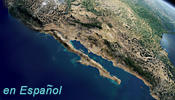![[Ocean Oasis Field Guide]](images/bnr-oo-field.gif)

![[Ocean Oasis Field Guide]](images/bnr-oo-field.gif) |  |
|
Balanus sp. |
Phylum Arthropoda |
DescriptionCirripedes (barnacles) are the only sessile group of crustaceans. They have three developmental forms. As in other crustaceans, the nauplius comes first; it is followed by the settling larval stage, called a cypris. The cypris larva settles onto a substrate such as rock, "cementing" itself, and transforming into what is recognized as a barnacle. All adults are attached to a substrate. Barnacles are hermaphrodites. Size: The majority of sessile species measure a few centimeters in diameter, although some species can reach up to 23 cm (9 inches). Range and HabitatBarnacles are exclusively marine animals. They attach to rocks, shells, and other objects. Some barnacles are commensal on certain whales, turtles, fish, sponges, hydrozoans, and corals, among other animals. Barnacles bore into coral and old mollusks shells using chitinous teeth on the mantle as well as a chemical process to dissolve the shell. Natural HistoryLouis Agassiz described a barnacle as "nothing more than a little shrimp-like animal, standing on its head in a limestone house and kicking food into its mouth." Barnacles were once classified as mollusks because of the forming of an outer skeleton or "shell" around the soft-bodied animal. In 1830 the larval stages were first discovered, and the relationship between barnacles and crustaceans was established. Barnacles create some of the most serious "fouling" problems for ship bottoms, buoys, and pilings. The speed of a badly fouled ship may be reduced by 30%. At one time, research was conducted studying the possible use of the barnacle cement as an aid in dental applications. |
Text by Patricia Beller
Field Guide |
Site Index |
Ocean Oasis Introduction
|
|
© 2000 San Diego Natural History Museum |